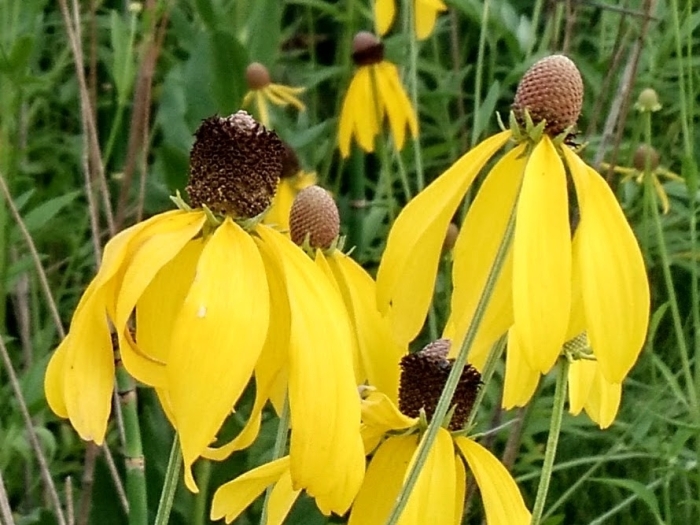Pinnate Prairie Coneflower
(Ratibida pinnata)
Pinnate Prairie Coneflower (Ratibida pinnata)
/
/

pobrito
Public Domain









































































Estimated Native Range
Summary
Ratibida pinnata is valued for its ornamental qualities, including its showy flowers and its ability to attract butterflies and birds, enhancing the ecological value of gardens. It is often used in native plant gardens, meadow plantings, and as a border plant. The ’Sunglow’ cultivar is a popular choice for its bright yellow flowers. This plant thrives in full sun and is drought-tolerant, requiring low amounts of water once established. It prefers well-drained soils and can tolerate a range of soil types, from clay to sandy loams. While generally low-maintenance, it can be susceptible to root rot in poorly drained conditions and may require division every few years to maintain vigor.CC BY-SA 4.0
Plant Description
- Plant Type: Herb
- Height: 3-5 feet
- Width: 1.5-2 feet
- Growth Rate: Moderate
- Flower Color: Yellow
- Flowering Season: Summer
- Leaf Retention: Deciduous
Growth Requirements
- Sun: Full Sun
- Water: Low
- Drainage: Fast, Medium
Common Uses
Bank Stabilization, Bee Garden, Bird Garden, Border Plant, Butterfly Garden, Deer Resistant, Drought Tolerant, Fire Resistant, Hummingbird Garden, Showy Flowers, Street Planting
Natural Habitat
Prairies and open woodlands in the central and eastern United States and Ontario, Canada
Other Names
Common Names: Drooping Prairie-Coneflower, Prairie-Coneflower, Pinnate Prairie-Coneflower, Pinnate-Leaf Prairie-Coneflower, Stor Mexikohatt, Grayhead Cornflower, Gray-Head Prairieconeflower
Scientific Names: , Ratibida pinnata, Rudbeckia pinnata, Lepachys pinnata, Obeliscaria pinnata, Lepachys pinnatifida, Helianthus pinnatus, Lepachys angustifolia, Rudbeckia cinerea, Rudbeckia citriodora
GBIF Accepted Name: Ratibida pinnata (Vent.) Barnhart